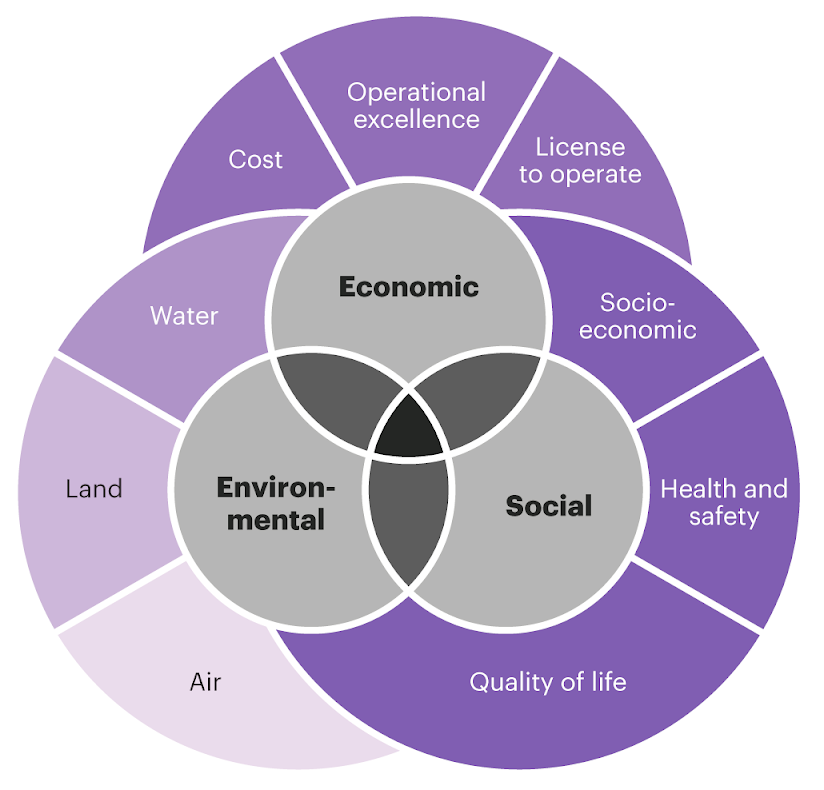Indian Economy
Sustainable Mining
- 19 Jan 2021
- 7 min read
This article is based on “Mining in India equals selling the family gold” which was published in The Hindu on 19/01/2021. It talks about the issues related to the present state of mining practices and the need to adopt sustainable mining.
India’s National Mineral Policy 2019 states that “natural resources, including minerals, are a shared inheritance where the state is the trustee on behalf of the people to ensure that future generations receive the benefit of inheritance.”
However, mining is the act of removing and consuming a limited resource. Moreover, the Government of India and state governments treat the mineral sale proceeds as revenue or income. This leaves neither the minerals nor their value for future generations to inherit.
Further, as the mined materials support roughly 45% of the world’s economic activities, this large-scale mining also has a social and environmental impact.
In this context, there is a need to adhere to the principle of Intergenerational Equity, which makes it imperative to ensure future generations inherit at least as much as that of the current generation.
Issues Associated with Unsustainable Mining
- Going Beyond Carrying Capacity: In many cases, mining operations have been carried out without concern for the ‘carrying capacity’ of the environment and other infrastructural limitations.
- This has put avoidable pressure on the environment and caused inconveniences to the people living in the mining areas.
- Loss of Public Revenue: Driven by lobbying, political donations, and corruption, minerals are often sold at prices significantly lower than what they are worth.
- Illegal mining, in many cases, has a similar effect while additionally causing loss of public revenues.
- According to the International Monetary Fund, due to unsustainable mining, many governments of resource-rich nations face declining public sector net worth.
- Large Number of Small Mines: In India, many small mines (including quarries for extracting minor minerals) operate in most states.
- These present difficult challenges for sustainable development as their financial, technical, and managerial limitations restrict their ability to take adequate corrective measures.
- Growing Inequality & Loss of Natural Wealth: Naturally, the extractors are keen to extract as quickly as possible and move on. This deepens inequalities, as a few extractors acquire wealth without proper redistribution to the people.
- It also results in the loss of natural wealth. For example, it is estimated from the annual reports of Vedanta that over eight years (2004-2012), the State of Goa lost more than 95% of the value of its minerals.
Way Forward
- Life-Cycle Approach: There is a need to apply sustainability principles to all stages of the mine life cycle – exploration, mine planning, construction, mineral extraction, mine closure, and post-closure reclamation and rehabilitation. These principles include elements such as:
- Intra And Inter-generational Equity,
- The Precautionary Principle,
- Scientific Mining,
- Management of Environmental and Socioeconomic Impacts.
- Creation of Future Generation Fund: Like Norway, the entire mineral sale proceeds must be saved in a Future Generations Fund.
- Also, in 2014 the Supreme Court set up a global judicial precedent by ordering the creation of a Goa Iron Ore Permanent Fund. This model is worth emulating in all the major mining areas.
- Adherence to Zero-Loss Principle: If we extract and sell our mineral wealth, the explicit objective must be to achieve zero loss in value.
- The state as trustee must capture the full economic rent (sale price minus the cost of extraction, cost including reasonable profit for extractor).
- Consortia of Small Mining Enterprises: In order to alleviate the limitations of small mines in carrying out sustainable development activities, consortia of small mining enterprises in a region should be promoted.
- Also, technical advisory services should be made available to them in the relevant areas.
- Environmental Footprint Framework: A common sustainable mining framework should be focused on reducing the environmental impacts of mining.
- Strategies for assessing mining operations’ sustainability include measuring, monitoring, and improving various environmental performance metrics. These are used to determine whether a mining operation is sustainable.
- The key metrics for environmental sustainability in mining relate to efficiencies in resource consumption, minimizing land disturbance, pollution reduction, as well as closure and reclamation of exhausted mine lands.
- Multi-Stakeholder Approach: Preparation of a socio-economic assessment report for a mining project should be made a part of the permitting process for the grant and administration of mineral concession to a mining enterprise.
- Mining enterprises should preferably execute local socio-economic development works rather than government and semi-government agencies to avoid the problems of inadequate capacity, political manipulation, and corruption.
Conclusion
Since minerals are a shared inheritance held in trust for the people and future generations, it is essential that as a nation, we change our paradigm to understand minerals as a “shared inheritance,” not a source of “windfall revenue.”
|
Drishti Mains Question “Minerals are a shared inheritance held in trust for the people and future generations”. In light of the statement, discuss the issues related to the present state of mining practices and adopt sustainable mining. |
This editorial is based on “Washington’s return to the Paris climate accord is a significant step. Build on it” published in The Hindustan Times on January 17th, 2020. Now watch this on our Youtube channel.





